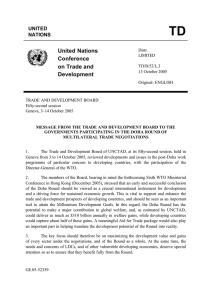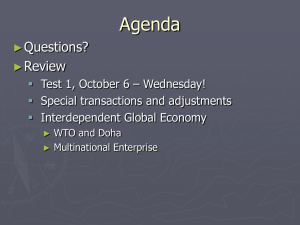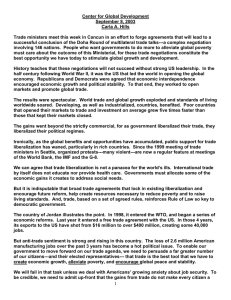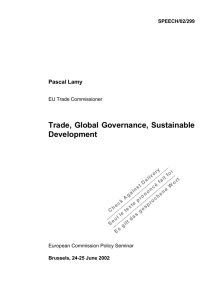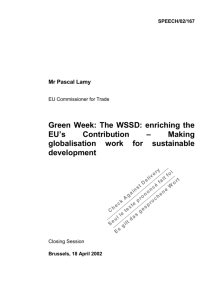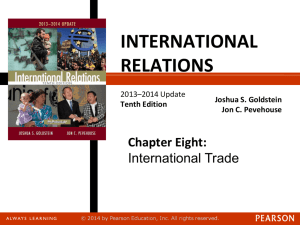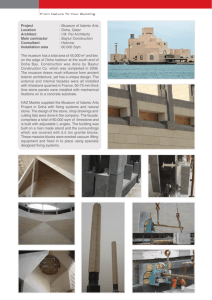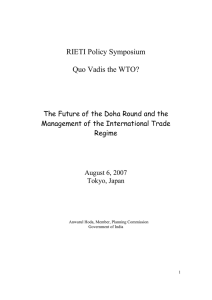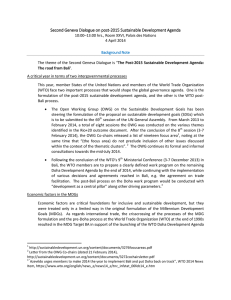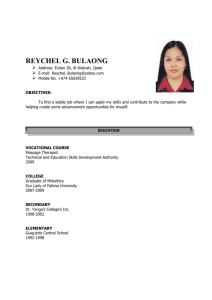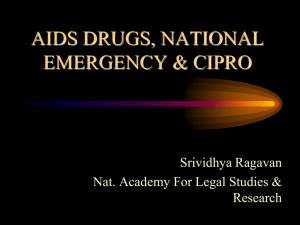rimun 2014 study guide: world trade organization
advertisement
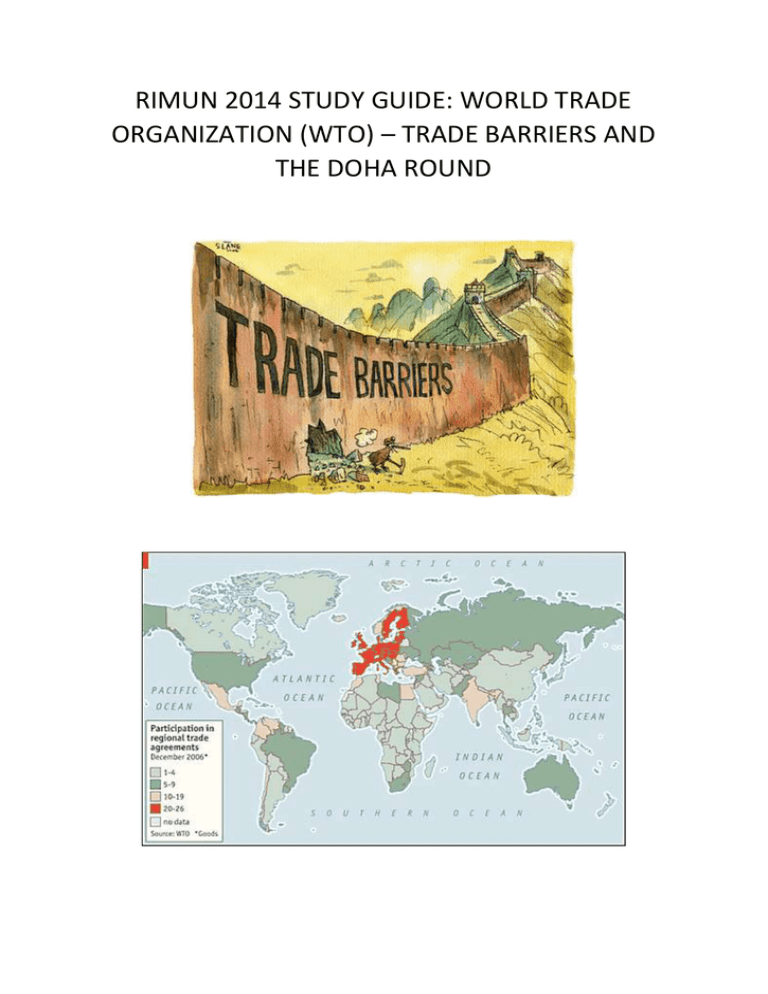
RIMUN 2014 STUDY GUIDE: WORLD TRADE ORGANIZATION (WTO) – TRADE BARRIERS AND THE DOHA ROUND Table of Contents ROLE OF THE COMMITTEE ............................................................................................................. 3 TRADE BARRIERS, LEDCs AND THE DOHA ROUND ................................................................ 3 RESOURCES FOR FURTHER STUDY.............................................................................................. 4 2 ROLE OF THE COMMITTEE The World Trade Organization (WTO) is the only international, multilateral organization that deals specifically with the rules of international trade. These rules are set up through WTO agreements, which are signed by governments and then ratified in national parliaments. It is the job of the WTO to oversee and facilitate the negotiations of these trade agreements, to operate the system of trade rules that these agreements compose, and settle possible trade disputes between countries. Many of the policies and rules adopted by the WTO serve to open up markets and enable trade to flow freely, with the ultimate goal of helping producers, exporters and importers of goods and services, thereby promoting economic development worldwide. TRADE BARRIERS, LEDCs AND THE DOHA ROUND BACKGROUND The latest round of trade negotiations between the member countries of the WTO is commonly known as the Doha Round, which was launched in Doha, Qatar in 2001. The goal of the Doha Round is to ultimately achieve a comprehensive reform of the international trading system, by for example lowering trade barriers and review current trade rules. In the official documents from the conference in 2001, a special emphasis was put on the integration of developing countries, particularly the less economically developed countries (LEDCs), into the international free market system: “We shall continue to make positive efforts designed to ensure that developing countries, and especially the least-developed among them, secure a share in the growth of world trade commensurate with the needs of their economic development. In this context, enhanced market access, balanced rules, and well-targeted, sustainably financed technical assistance and capacity-building programmes have important roles to play.” It is worth noting that every topic that is brought up for discussion in these negotiations are seen as part of a greater whole, and the parts cannot be separated from this whole, according to a principle referred to as the ‘single undertaking’, stating that “Nothing is agreed until everything is agreed.” 3 CURRENT SITUATION Since 2008, negotiations on the Doha Agenda have stalled because of a divide over some major issues such as agriculture, industrial tariffs, non-tariff barriers, services, and trade remedies. The most significant differences are between developed nations, led by the EU, the USA, and Japan, and the major developing countries, led and represented by India, Brazil, China, South Korea, and South Africa. There is also considerable contention against and between the EU and the USA over their maintenance of agricultural subsidies. As long as the issues regarding tariffs and agriculture are not resolved, LEDCs will continue to experience stagnation and an inability to compete in world trade on an equal basis. Agriculture has become the most important and controversial issue. Agriculture is particularly important for developing countries, as approximately 75 percent of the population in developing countries live in rural areas, and the vast majority are dependent on agriculture for their livelihoods. The first proposal in Qatar, in 2001, called for the end agreement to commit to substantial improvements in market access. It also called for reductions of all forms of export subsidies, and substantial reductions in trade-distorting support. Delegates will need to apply macroeconomics and human geography to devise potential policies and make propositions that close the gap between the industrialized nations in Western Europe and North America, and agrarian states and LEDCs, to establish a comprehensive trading network. RESOURCES FOR FURTHER STUDY WTO.org – more on what the WTO is, what it does, and what it stands for The Doha Agenda – the 21 subjects of the Doha work program What are regional trading blocs? – their role(s) and functions A Guide to World Trade Blocs – by the BBC Doha development round – The Economist’s coverage of the subject 4
